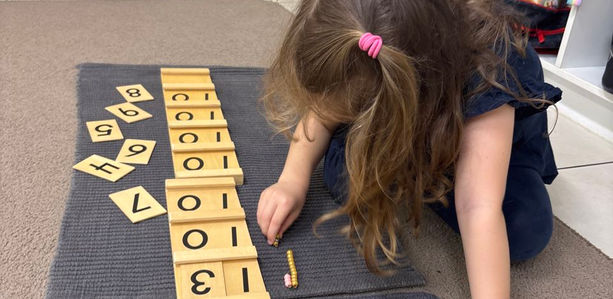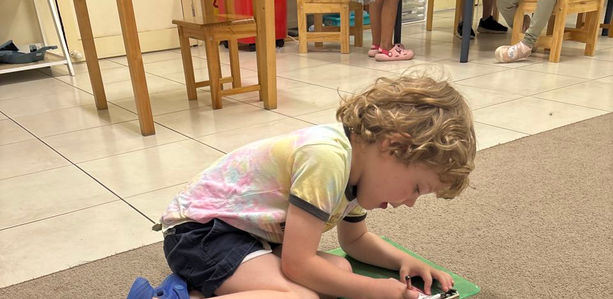.png)
“Let your child's true colours shine”
CALL US: 07 5681 0060
Numeracy
What is it?
Numeracy skills are essential for day-to-day life. The human brain is built to learn basic numeracy concepts form a very young age. Researchers have been impressed by the extent of numeracy skills held by three-year-olds even without any numeracy education. Researchers have also come to recognise the strong link between strong numeracy foundations in early childhood and success in numeracy learning during school years.
In the Montessori classroom, early numeracy concepts are introduced long before children are formally introduced to the mathematics activities, providing ‘indirect preparations’ for their later learning. This occurs not only in day-to-day interactions and tasks, but also in other areas of the classroom, predominantly the practical life and sensorial areas. These initial, intuitive stages of mathematics learning have been termed the ‘informal’ stage. Here, children develop a strong foundation in such early numeracy concepts as matching, sorting and classifying, sequencing, patterning, identifying geometric shapes, grading in various dimensions and early concepts in measurement. This accords with the finding that numeracy should be learned “in multiple contexts and across different curricular areas, in order to be considered useful to students”. In this way, a child in a Montessori classroom has a strong foundation in early numeracy concepts before being introduced to the more ‘formal’ numeracy area of the classroom. Children only start learning in the formal numeracy area when they are developmentally ready and interested.
The numeracy area of the Montessori classroom is laid out in a well-sequenced, logical curriculum that uses concrete materials. Each concept being learnt is isolated within a separate material, or activity. This has the effect of distilling concepts into discrete, bite-sized chunks, making it easier for a child to learn and understand new concepts and setting them up for success. Due to the nature of the Montessori classroom, children are able to return and practice as often as they need in order to understand the concept. Such ‘distributed practice’ has been shown to improve learning outcomes. Moreover, children build strong foundations in each numeracy concept without being ‘skipped over concepts’ leading to poor mathematical understanding. They progress at their own pace, learning skills at just the ‘right time’. This ensures children are always working within their ‘zone of proximal development’.
Areas of Numeracy
Children are first taught the concept of quantity. They learn basic counting concepts such as stable order, 1:1 correspondence and cardinality. They then learn the numerals associated with the quantities. There are many activities that can help children practice and acquire these concepts.
After a child has a concept of quantities and numerals from 1-10, they can continue learning bigger numbers. Children can learn quantities and numerals for teen and ten numbers. Children start to see obvious 'patterns' in math.
There are many other areas of numeracy that young children are able to explore with hands-on activities. Examples include geometry, fractions, money, early operations such as addition and subtraction, weight and volume. Early exposure to these activities with concrete materials lays a great foundation for future learning.

















